The doll can be pre-ordered at the Disney Store on July 28th and at DisneyStore.com on July 29th.
D23 Presents: Treasures of the Walt Disney Archives Extends Through January 4, 2015
The Museum of Science and Industry, Chicago is extending the run of Treasures of the Walt Disney Archives, presented by D23: The Official Disney Fan Club. Thanks to the exhibit’s popularity, guests will be able to enjoy the exhibit through January 4, 2015.
“Guests of all ages have enjoyed revisiting their favorite Disney moments in this exhibit,” said Anne Rashford, director of special exhibits.
“They learn about Walt’s inspirational journey to create the company behind so many movies, television shows and theme parks that bear the Disney name. We are thrilled to be able to keep the exhibit here at MSI through the holiday season.”
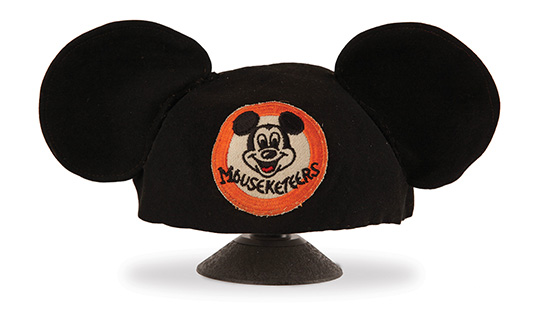
From Mickey Mouse to Captain Jack Sparrow, the exhibition features more than 300 artifacts from nine decades of Disney’s rich history—including props; costumes; memorabilia; and artwork from classic Disney animation, theme park attractions, television shows and live-action films. Hands-on activities allow kids and adults alike to explore animation technology from all 53 Disney animated films and learn to draw one of their favorite characters in the Animation Academy.
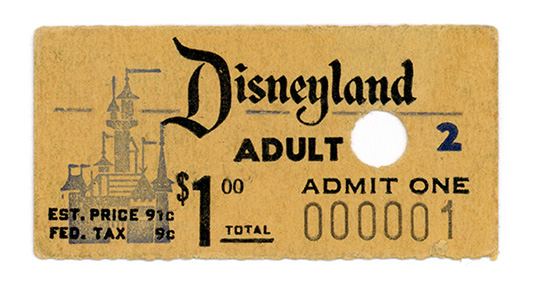
The exhibit is not included in Museum Entry but can be added to an Explorer ticket package. D23 Gold and Silver Members will receive a special discount on exhibit entry. For more information and to buy tickets, visit MSIChicago.org. For more information about D23: The Official Disney Fan Club, visit D23.com. This exhibit is presented by Walgreens.
Haunted Mansion Special in Development at Disney Television Animation
Beware of hitchhiking ghosts!
Disney Television Animation is in development on Haunted Mansion, a special for Disney Channel and Disney XD inspired by the popular Disney Parks attraction. Legendary horror-genre artist and children’s book illustrator Gris Grimly (Gris Grimly’s Wicked Nursery Rhymes) is attached to executive produce and art direct with Scott Peterson executive producing, story editing and writing and Joshua Pruett consulting producing and writing, both of Phineas and Ferb.
And to celebrate Haunted Mansion’s 45th anniversary, grab your tickets to D23 Disney Fanniversary Celebration!
Introducing Disney•Pixar’s Lava
In this explosive love story, a lonely volcano longs for someone to “lava.”
Pixar’s Inside Out About Fear and Sadness But Mostly Joy ►
Inspired by the isolated beauty of tropical islands and the explosive allure of ocean volcanoes, Lava is a musical love story that takes place over millions of years. From Pixar Animation Studios, director James Ford Murphy and producer Andrea Warren, Lava opens in theaters on June 19, 2015, in front of Inside Out.
Pixar’s Inside Out Brings Fear and Sadness But Mostly Joy
If you had the chance to see the D23 Expo 2013 announcement about Pixar’s newest film Inside Out, then you were also introduced to some of the film’s stars.
Introducing Disney•Pixar’s Lava ►
The team at Pixar rolled out their latest project and brought on stage Bill Hader and Phyllis Smith, who will be voicing Fear and Sadness, respectively.
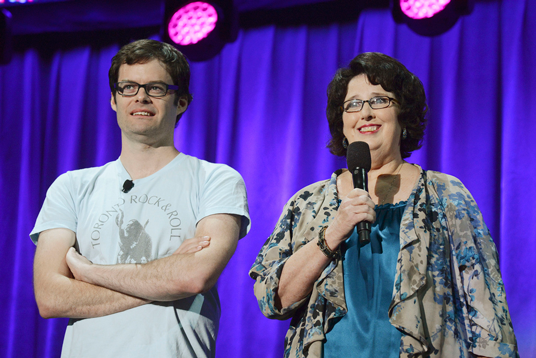
Wait, voicing an emotion? Yes, the new film will characterize these emotions with players Fear and Sadness, plus Anger (Lewis Black), Disgust (Mindy Kaling), and Joy (Amy Poehler). These guys all live in the consciousness—the brain—of Inside Out’s human lead, Riley.
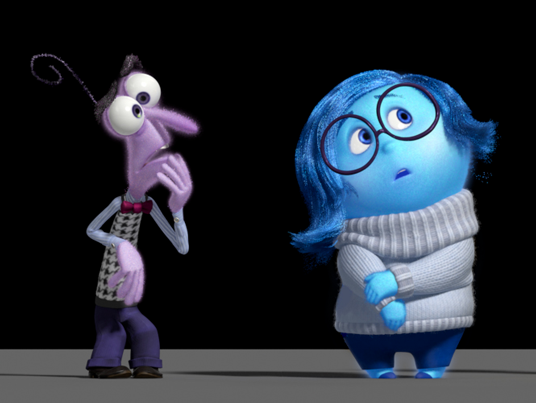
The concept art below shows how Riley’s emotions guide her. You can see Joy operating a control panel that accesses Riley’s memories and real-time interactions throughout her day. It’s called Head-quarters. The film will switch back and forth from the “inside” perspective of her emotions and what it looks like when Riley acts them “out.” The juxtaposition of this is both hilarious and heartwarming.
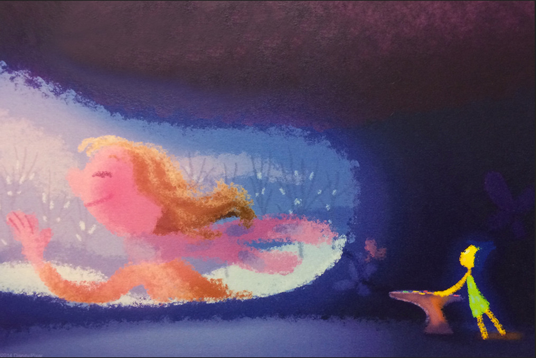
Inside Out follows Riley at a time when she is uprooted from her Midwest life when her father starts a new job in San Francisco. It’s a struggle for her emotions to adjust to the new life and it doesn’t make it any better when turmoil ensues at Headquarters. Although Joy, Riley’s main and most important emotion, tries to keep things positive, the emotions conflict on how best to navigate a new city, house, and school.
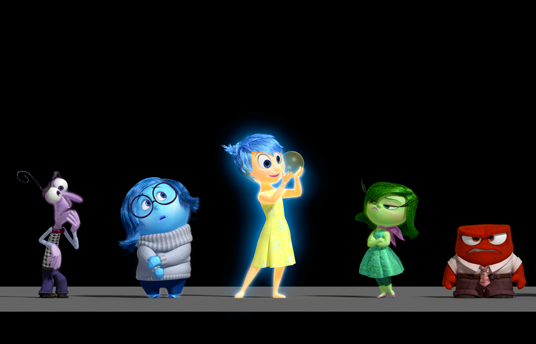
The film debuts June 19, 2015. Academy Award®-winning director Pete Docter (Monsters, Inc., Up) has taken us to unique and imaginative places. Now, in Disney•Pixar’s original movie Inside Out, he will take us to the most extraordinary location of all—inside the mind. And we can’t wait to psychoanalyze the whole thing.
Meet the Cast of Disney’s Descendants
Meet Mal and Evie:
Mal (left) is played by Dove Cameron (Disney Channel’s Liv and Maddie) and is the daughter of Maleficent, played by Kristin Chenoweth (Glee, Broadway’s Wicked). Evie (right) is played by newcomer Sofia Carson and is the daughter of the Evil Queen, played by Kathy Najimy (Hocus Pocus, Sister Act).
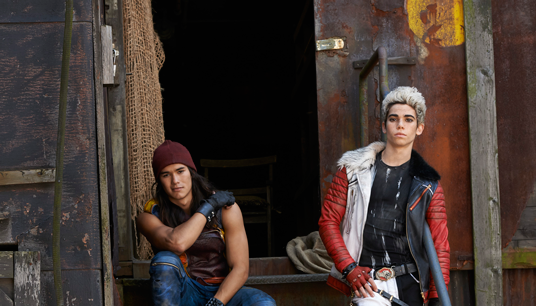
Meet Jay and Carlos:
Jay (left) is played by Booboo Stewart (X-Men Days of Future Past, Twilight) and is the son of Jafar, played by Maz Jobrani (The Interpreter). Carlos (right) is played by Cameron Boyce (Disney Channel’s Jessie) and is the son of Cruella de Vil, played by Wendy Raquel Robinson (The Game).
Disney’s iconic characters are living out their happy endings in Auradon, a present day idyllic kingdom. All defeated villains have been exiled to the Isle of the Lost, a remote island where they must spend their remaining days isolated from Auradon’s modern-day luxuries. Time passes, and the teenage son of King Beast and Queen Belle is poised to take the throne. His first proclamation: offer a chance at redemption to the trouble-making descendants of the villains stuck on the Isle of the Lost. The teenaged kids of Maleficent, the Evil Queen, Jafar and Cruella de Vil are allowed into the kingdom to attend prep school alongside the teenage progeny of iconic Disney heroes. The villainous parents see this as an opportunity to use their children to carry out an evil plan that will finally free them all from the Isle of the Lost. Will these evil teens follow in the footsteps of their wicked parents?
Disney’s Descendants is a contemporary live-action adventure comedy that introduces the teenage progeny of Disney’s iconic characters—most notably its evil villains. The Disney Channel Original Movie will premiere on the Disney Channel in 2015.
View Storyboard Art From a Never-Produced Donald Duck Short
We can all recall Mickey’s deeds of giant-clobbering glory as the Brave Little Tailor, Donald Duck’s storybook trip to Bahia, and Goofy’s super-goofy horseback-riding lessons! But how many of us remember Donald’s adventure delivering a doll across town in the short The Delivery Boy?
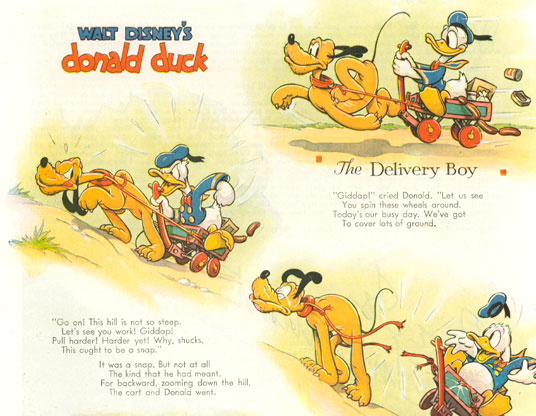
When The Delivery Boy began development in the late 1930s, it was about Donald delivering groceries—or so early publicity suggested. But in 1943 a revised plot was created: The fruit and veggies went out and discarded Pinocchio mechanical doll gags went in. A cute bobby-soxer design was drawn up… but in the end, The Delivery Boy was never delivered.

Holes in the plot reveal why not. The story crew never figured out the doll’s destination: To whom would a museum rent a robot jitterbug? And speaking of jitters—how self-aware was this living doll, anyway? She was sentient when it helped the story, but otherwise a thoroughly mindless mech. Perhaps that’s why this wind-up story wound down.
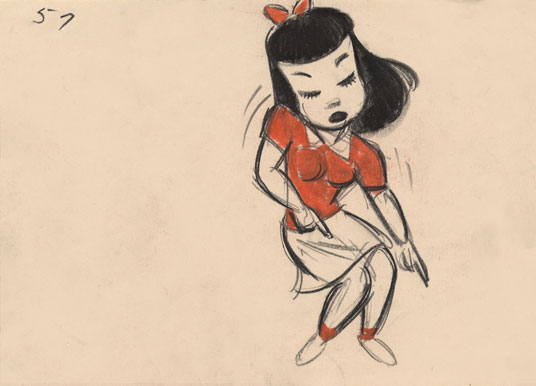
Delivery boy Donald rides his bike to the Doll Museum, where dozens of life-size mechanical dolls are on display. But when curious Donald tries to wind them up, he is sternly warned: Don’t touch!
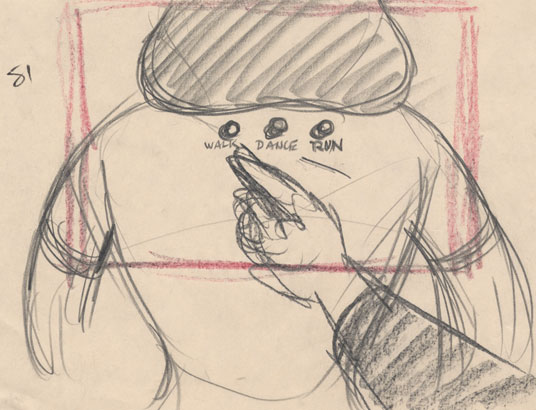
The assignment: Donald must deliver a teenage bobby-soxer doll across town. But this proto-fembot is too big to carry. So Don ignores the warning, winds her up, brings her to “life”—and teaches her to pedal his bike. Now she can take herself to her destination… and Don can take it easy!
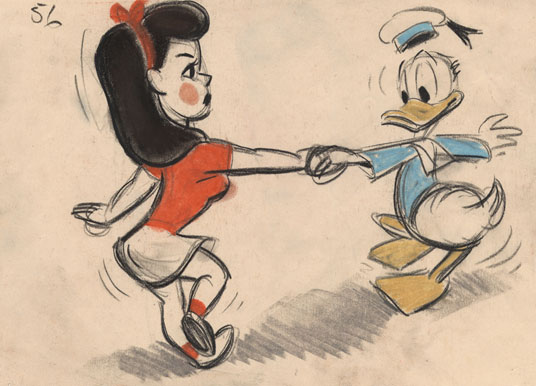
But alas, en route a construction crane hooks the doll and lifts her onto a ship under construction. Lazy Donald, already paid, could just leave her to wander… but then comes a message from the Museum: The order has been cancelled. Don must get the bobby-soxer back!
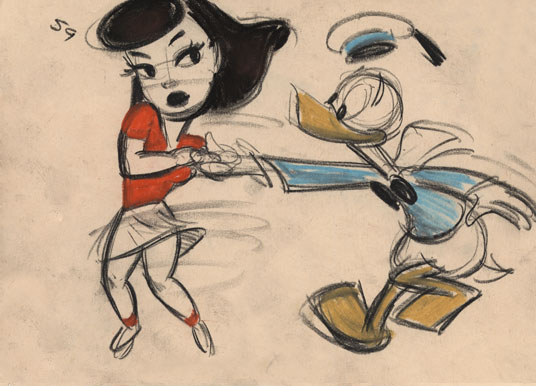
Our hero chases the teenage robot along some high beams. But she kicks him into a steam shovel’s gears, then returns to the museum on her own. Dazed Don catches up just in time to be thanked—and warned again: Don’t touch!
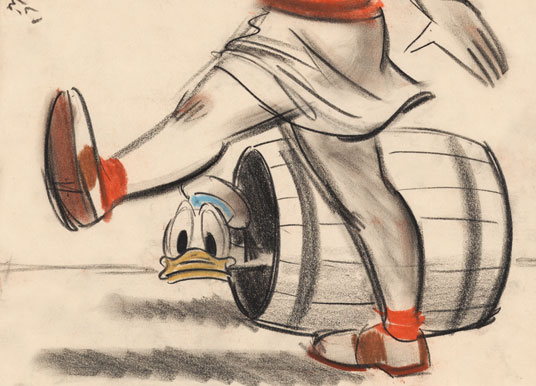
These story sketches from The Delivery Boy help us visualize what this short might have looked like if it had been animated.

Images courtesy Walt Disney Animation Research Library.
Animation’s Volatile Relationship with Plastic
Anticipation was high for the 1862 Great International Exhibition in London.
As the opening day approached, over 28,000 exhibitors representing over thirty-five countries—from China, Japan, and Australia, to Canada, Madagascar, and Jamaica—began to stream into South Kensington on the site where today sits the Natural History Museum and the Science Museum. They were there to show off the latest developments in the fields of industry, technology, and the arts. Among them was Alexander Parkes, a British inventor from Birmingham who created the first man-made plastic, a thermoplastic polymer called Parkesine. One might imagine how the public’s curiosity must have been piqued by this material that, once heated, could be easily manipulated into a variety of shapes that would set as it cooled.
By the mid-twentieth century, industrial manufacturers such as Dow Chemical were producing a variety of plastics, and many artists and designers were using different types of plastic to create furniture, sculptures, and other design objects. Inexpensive, lightweight, colorful, and easy to shape, plastics enabled them to push beyond the limitations of other traditional materials.
“Cellulose nitrate and cellulose acetate were two early plastics that sculptors loved,” explained Michael Schilling, senior scientist at the Getty Conservation Institute (GCI).
“They were among the first plastics readily available to artists. Although they looked like glass, sculptors could warm them, bend them, paint them, do all kinds of things to them and they wouldn’t shatter like glass. In the 1930s and 1940s, artists like Naum Gabo and Antoine Pevsner used them and were able to show off a whole new range of expression in three dimensions.”
“These two plastics start with cellulose, a natural product that comes from trees and cotton,” explained Schilling. “Manufacturers react cellulose with nitric acid (in the case of cellulose nitrate) or acetic acid (in the case of cellulose acetate) to make a hard colorless polymer. By mixing in chemicals called plasticizers, they create flexible plastics that can be molded and fashioned into objects.”
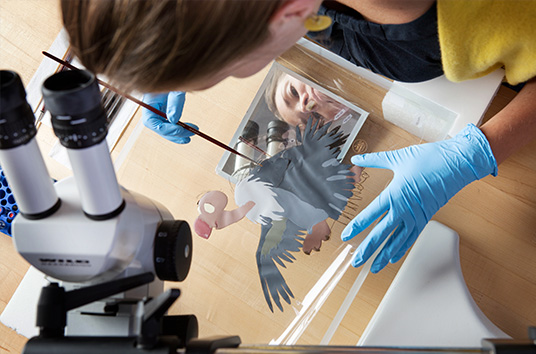
Unfortunately, some plastics—including cellulose nitrate and cellulose acetate—don’t have the long life spans once anticipated. Many objects made from these plastics are showing serious signs of deterioration that can appear with little or no warning.
Cellulose nitrate is not only extremely flammable, but also produces highly corrosive nitric acid as it degrades. Early motion picture films were made from cellulose nitrate. Over time, as the film degraded, the nitric acid would not only destroy the film but also eat through the metal canister in which the film was stored.
So the plastics industry replaced it with cellulose acetate, a less flammable plastic. Unfortunately, cellulose acetate slowly degrades over time, ultimately reverting back to cellulose and acetic acid, a chemical found in vinegar. That is why film archivists call this degradation process Vinegar Syndrome.
Typically, as plastic objects degrade, they may begin to lose their shape and become warped, rippled, and discolored. Plasticizers can move to the surface of the object, creating sticky residues. Eventually, what remains of the object may bear little resemblance to the original design.
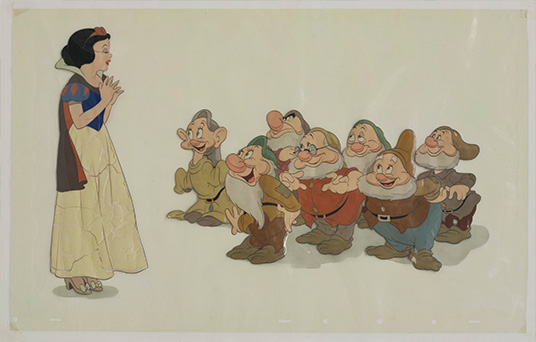
“Finding ways to preserve plastic objects requires scientists and conservators to work together. Identifying the types of plastic from which works of art were created and determining appropriate conservation methods are growing challenges for museums,” said Schilling.
So in early 2010, the GCI began a collaboration with the Disney Animation Research Library (ARL) to improve the understanding of plastics in their collection—plastics that were also extensively used for modern sculptures and design art objects. This joint effort ispart of the GCI’s long-term Preservation of Plastics project, a key component of the Institute’s Modern and Contemporary Art Research initiative, which engages in a range of scientific research to analyze materials in modern and contemporary art, assess their stability, investigate methods to improve knowledge of the effects of conservation treatments, and find technical solutions for decreasing the rates of deterioration.
The ARL is the world’s largest archive of animation, housing approximately 65 million pieces of animation art created over a period of more than 80 years by Walt Disney Animation Studios. The expansive collection includes not only conceptual design work, animation drawings, model sheets, background paintings, layouts, exposure sheets, models, audiotapes and videotapes, reference photographs, and books, but also original plastic animation cels. Initially, the animation cels were of greatest interest to GCI scientists.
While the ARL’s state-of-the-art storage facilities have extended the life of these materials, the exact aging process depends on a number of factors, including the composition of the plastics. A number of cels in the archive are already showing the typical signs of cellulose plastic deterioration, such as yellowing, warping, and cracking, as well as the visible pulling away of paint from the plastic support.
The GCI and ARL have been studying this collection together to better understand the changes that occur in these materials over time and to learn more about the possible causes of these changes, with the ultimate aim of improving ways of preserving not only the Walt Disney Company’s animation cels, but also cels in other collections.
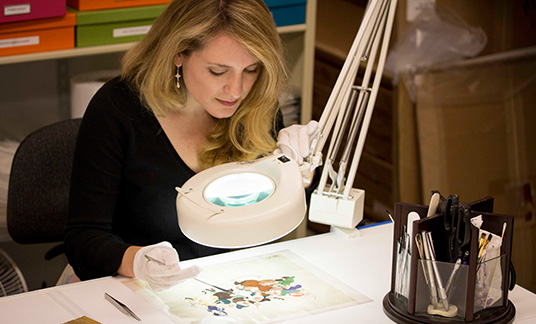
Through their chemical analysis research, GCI scientists were able to identify what type of plastic each cel was made from, what kind of plasticizers were used to make the cel, and how much the cel had discolored. With that information, they could identify which of the cels were more unstable and fragile. In addition, by measuring how much acetate was still present, they were able to determine how much degradation had already occurred. All of this information enables the ARL to ensure that each cel is being stored in the ideal climate conditions, as this varies from plastic to plastic. But it also allows GCI scientists to extrapolate the information gleaned from the Disney research and apply it to sculptures, furniture, and other objects made from cellulose acetate and cellulose nitrate.
“One of the most important needs for any of our scientific research projects is reference samples. That’s true whether we’re studying paints, paper, metals, canvas, lacquers, or plastics,” said Schilling. “We use these samples in tests to identify and characterize the materials, see how they change with age, with light exposure, or with temperature and humidity extremes. They’re vital. But if you want to study cellulose nitrate or cellulose acetate sculptures of Gabo or Pevsner, where do you get reference plastics made in that era? You’d really be hard-pressed to find them.” The ARL animation cel collection provided a unique and invaluable source of historic cellulose nitrate and cellulose acetate for studies such as this.
“Our collaboration with the ARL has been terrific,” commented Schilling. “They’ve been incredibly generous in providing us not only with cel samples and reference materials, but also in giving us access to their extensive archives where we discovered gems of information, such as memos from the 1930s to plastics manufacturers outlining how the products were, or were not, working, and the changes they’d like to see the manufacturer make. The information is simply invaluable for our work. We look forward to a long and mutually beneficial relationship with them.”
This Disney Animation Research Library partnership builds on research findings that grow out of the GCI’s participation in POPART, a project initiated by a consortium of European research laboratories with the objective of improving conservation and maintenance of plastic objects in museum collections. The GCI’s continuing research into the conservation issues of plastic objects is designed to ultimately increase the treatment options available to conservators dealing with the escalating number of plastic objects in collections now showing signs of deterioration.
The Birds, Beasts, and Beauty of Disney’s Audio-Animatronics Characters
They are electronic actors that recite their lines over and over again, day after day, and year after year. Each delivery is consistent, rehearsed, and perfectly timed. As Disney parks have evolved, these Audio-Animatronics® have, too. They help extend our imaginations and guide us through experiences we never thought imaginable in real life.
The First Audio-Animatronics
When Walt Disney found an antique mechanical singing bird in a shop while on vacation in New Orleans, he was intrigued. He reasoned that he and his staff had been doing animation on film for years, but it would be fun to try some three-dimensional animation.
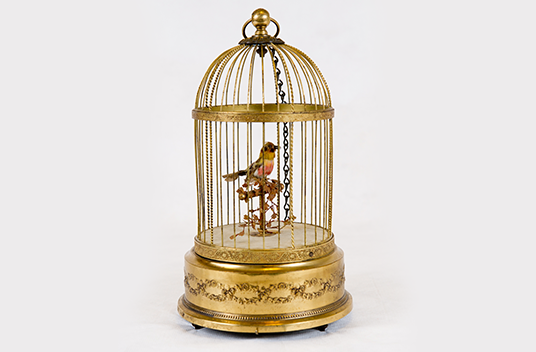
Walt had Wathel Rogers and other studio technicians take the bird apart to see how it worked. Then work was started to come up with a prototype figure. Charles Cristadoro, a sculptor, modeled some human heads, utilizing actor Buddy Ebsen and staff members around the Studio as models, and experiments were made with cams, hydraulics, and other methods of enabling the figures to move realistically.
One early concept was for a figure of Confucius, who would interact with guests in a Chinese restaurant at Disneyland. The Chinese restaurant was never built, so the technicians turned instead to the nation’s sixteenth president, Abraham Lincoln. When Robert Moses, in charge of the 1964–1965 New York World’s Fair, saw the figure being tested at the Disney Studio, he knew that he had to have it for the Fair. Walt agreed to speed up development of Lincoln, and the state of Illinois came forward to act as sponsor. The exhibit opened in April 1964, to great acclaim. But, Audio-Animatronics had actually been used in a show that had opened at Disneyland the previous year.
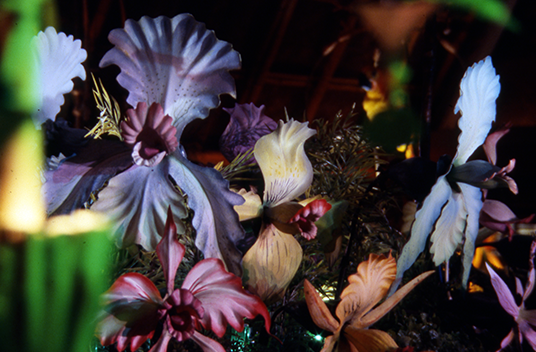
Less sophisticated figures of birds, flowers, and tiki gods populated the Walt Disney’s Enchanted Tiki Room. From then on, Audio-Animatronics would be an accepted part of many of the attractions at the Disney parks, reaching high degrees of complexity in Pirates of the Caribbean, Haunted Mansion, America Sings, Country Bear Jamboree, Spaceship Earth, The Hall of Presidents, and The American Adventure.
From Birds to Beasts
We’ve compiled a list of 30 of our favorite Audio-Animatronics from parks around the world. Check out this impressive lineup of Disney’s perfectly precise players that range from mice to monsters.
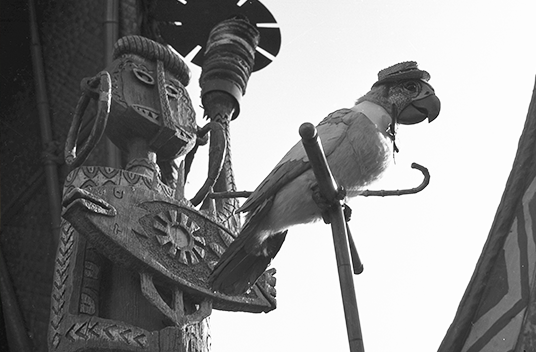
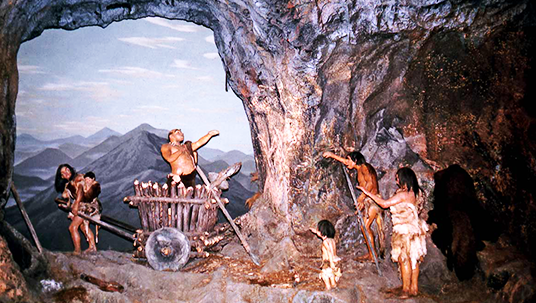

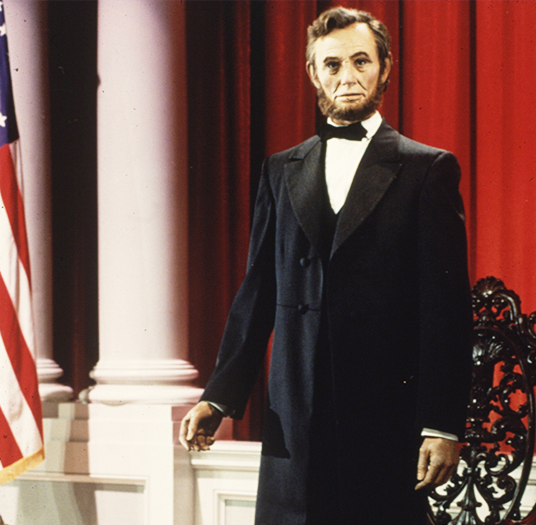
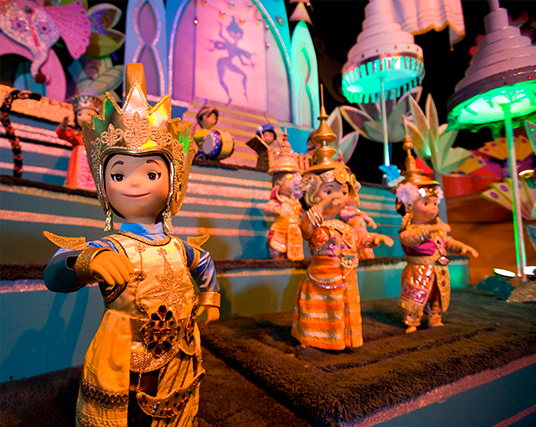
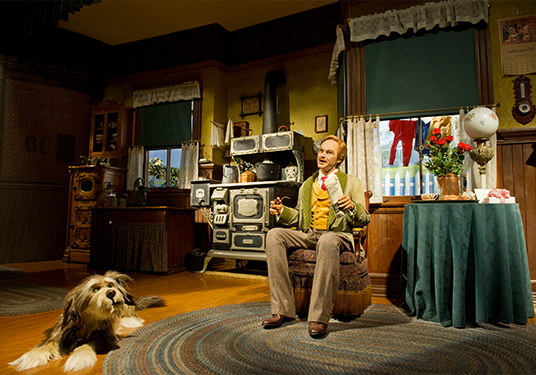
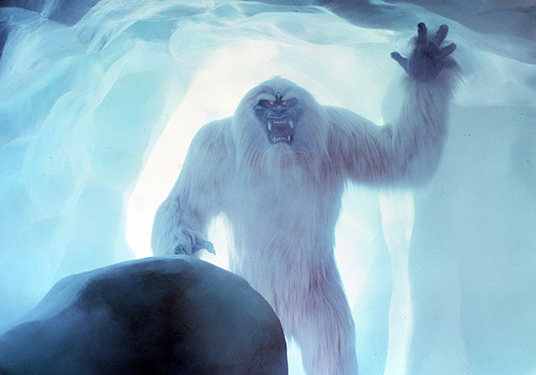
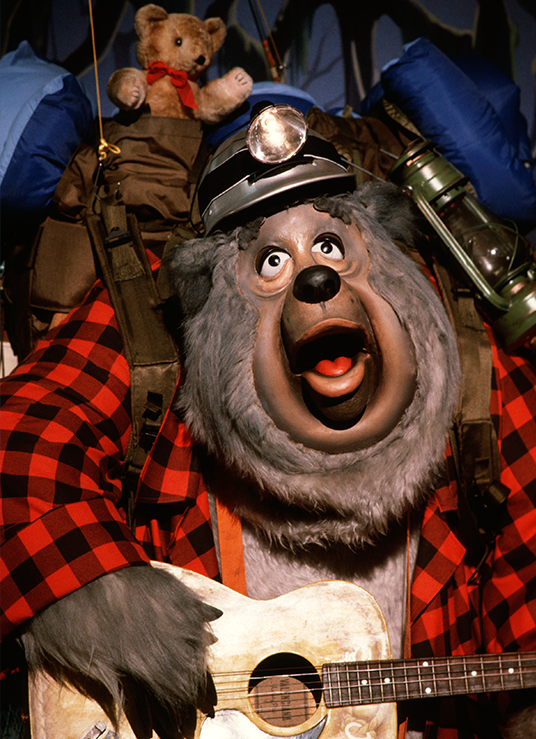
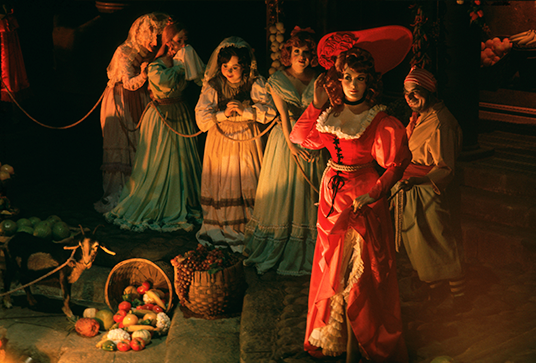
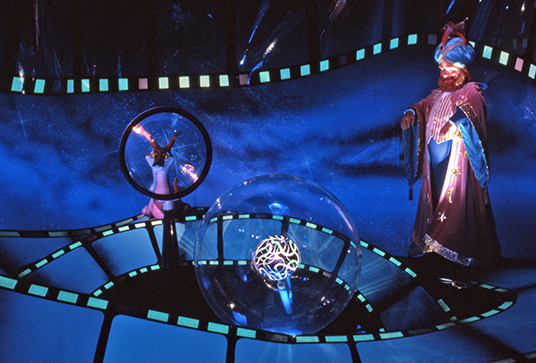
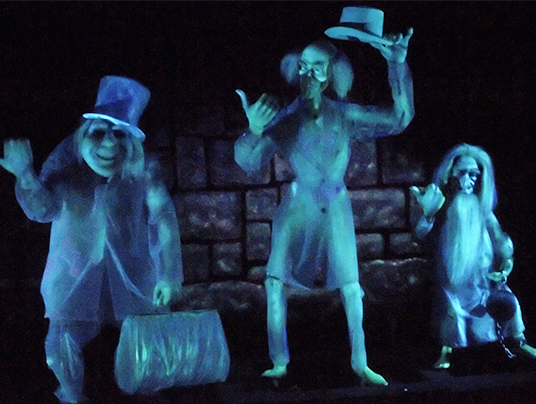
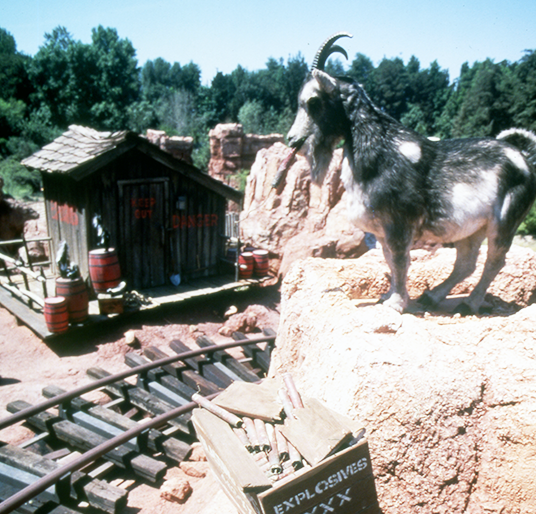
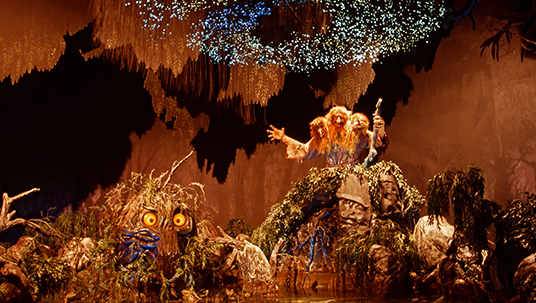
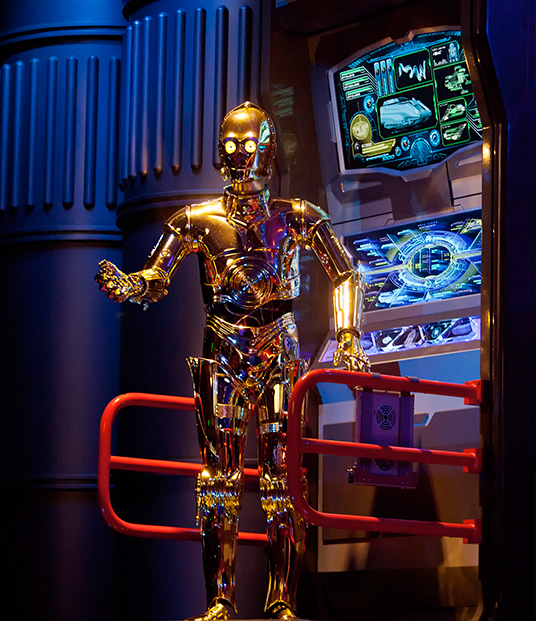
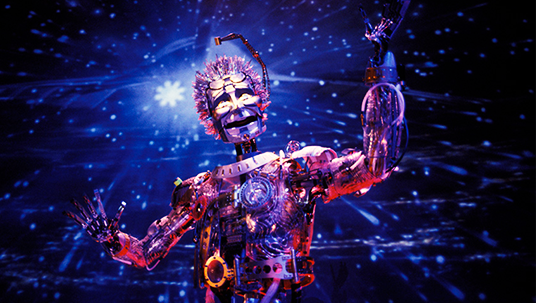
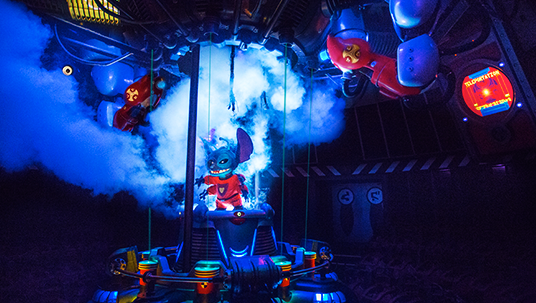
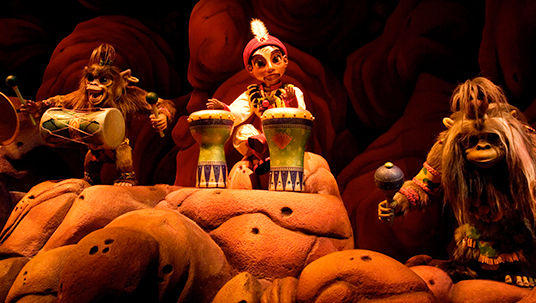

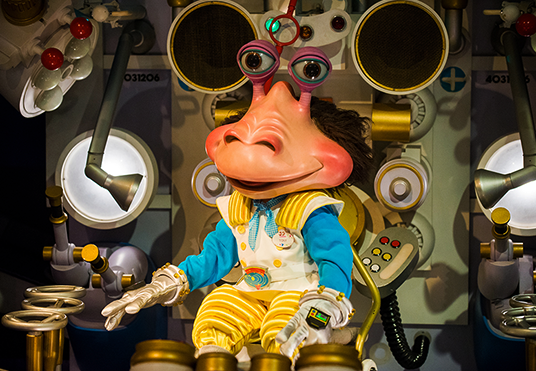
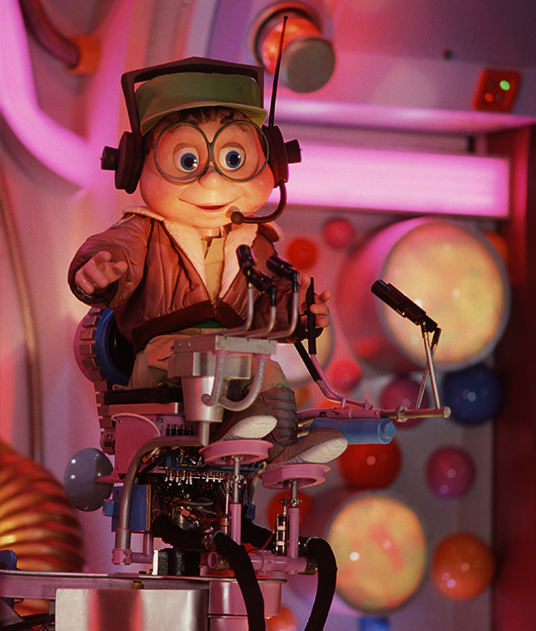

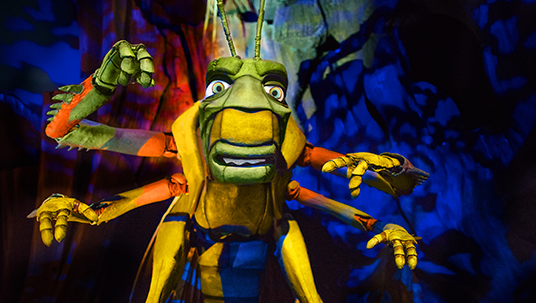
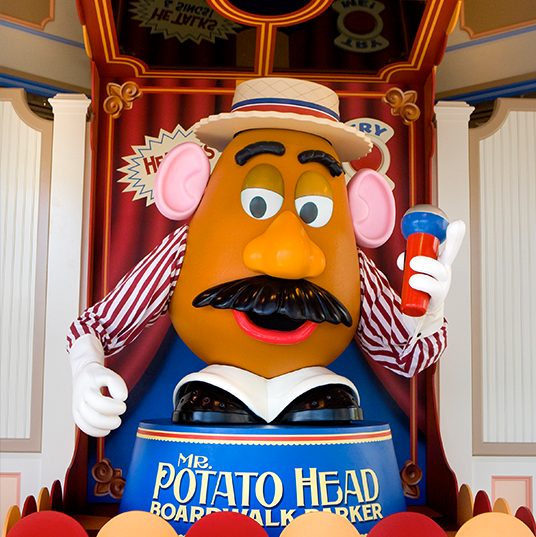
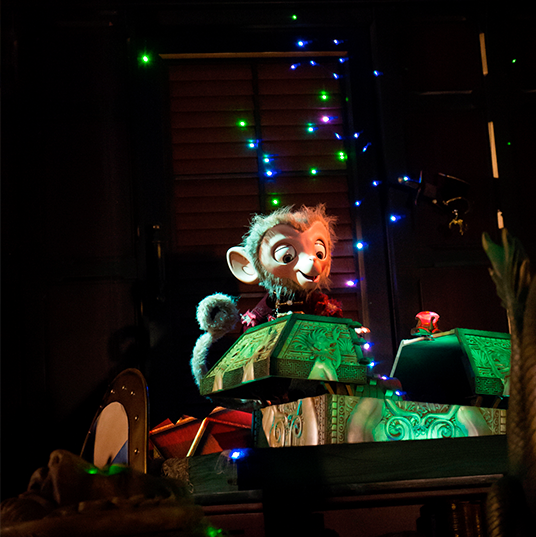
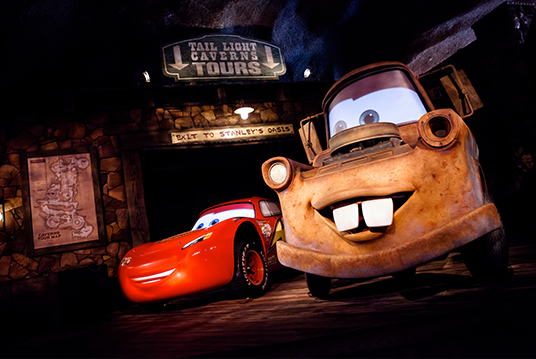
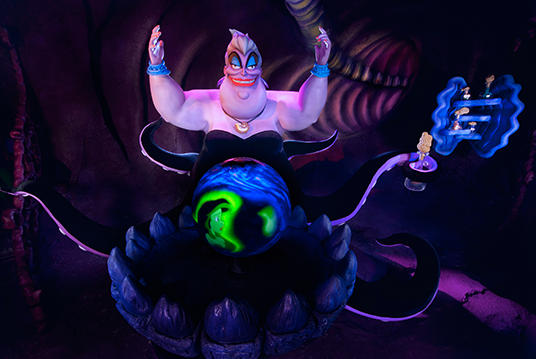
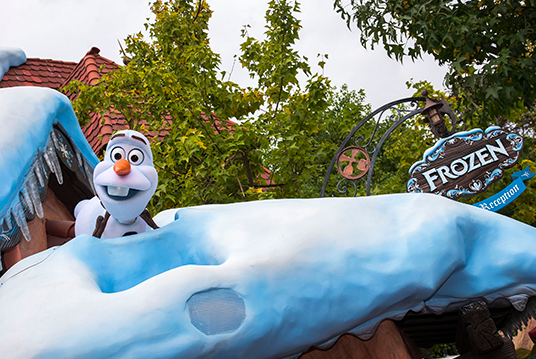
A Sneak Peek at the New Walt Disney Archives Exhibit
D23 Members taking our D23 Studio and Walt Disney Archives tour this weekend will get the chance to preview the first new installment of the latest Walt Disney Archives exhibit at The Walt Disney Studios.
Buy Tickets for Walt Disney Studios and Archives Tour on August 2 ►
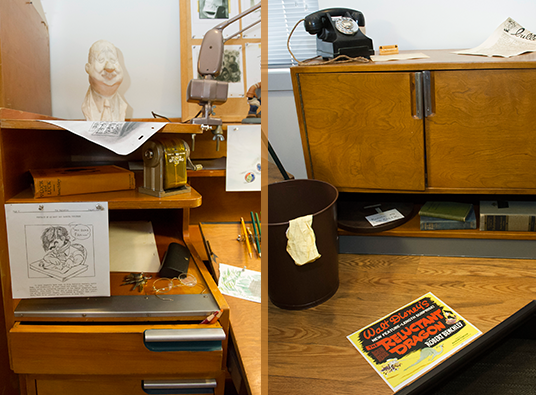
This recreation of an animator’s office celebrates early hand-drawn animation at the Disney Studio. While it does not reflect any individual animator’s workspace, the display is themed to 1940, the year in which The Walt Disney Studios premiered in its new facility in Burbank, California.
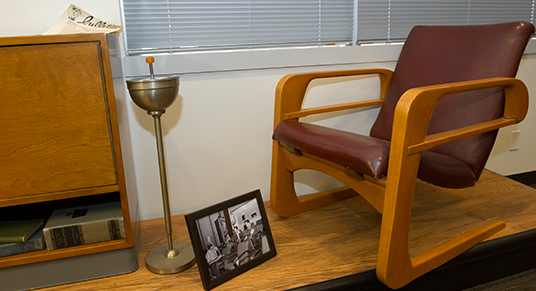
While on the tour, D23 Members and their guests will get to stroll through the original Animation Building where beloved animated films, including Cinderella, Lady and the Tramp, and The Jungle Book, were created.
Stay tuned for more props, costumes, and archives treasures to be added on display at the Walt Disney Archives and Disney Studios in time for the next D23 tours on August 2!


